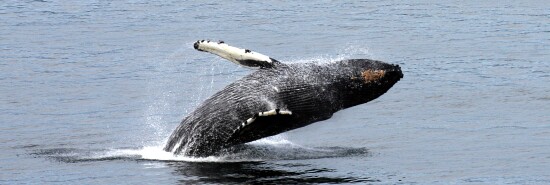
Why are whales washing up on the East Coast?
Andrew Rogan
Video Embed
A number of whales have been washing up on beaches along the mid-Atlantic coast since December, primarily in New Jersey and New York. Conspiracy theorists have flocked to the story, variably claiming that offshore wind farm development is killing the whales.
What’s actually going on?
Well, in 2023 so far, 16 humpback whales have washed up along the Eastern Seaboard. Simultaneously, offshore wind energy developers have been surveying various locations along the Eastern Seaboard to determine where to build offshore wind farms. Does correlation mean causation?
Not necessarily.
For a start, whales washing up on our beaches is a natural occurrence. Ironically, it can even be a good sign. Unlike many species and populations of whales, this affected population of humpback whales is not listed as threatened or endangered, meaning that its population is relatively healthy. That said, this population has seen unusually high death rates since 2016. During this period, 185 humpback whales have died along the Eastern Seaboard. The numbers of whales dying are elevated but only slightly.
CHINA’S ILLEGAL FISHING HORDES FACE A NEW CHALLENGE: SEABIRDS
The main argument of the conspiracy theorists is that the noise created by offshore wind surveys has been killing the whales. It’s true that noise pollution is one of the most severe threats whales face. Whales rely heavily on sound for several key life processes. When there is too much noise, their ability to perform these essential life functions is inhibited. This concern is well documented. Is it plausible that the noise from wind farm development is causing whale deaths?
Possible but very unlikely.
Scientists have been very closely studying the impacts of noise pollution on whales for many years. Within all of these studies, there are few, if any, circumstances in which there was evidence of noise causing baleen whales (such as humpback whales) to die. In one study off Australia’s east coast, scientists studied the response of humpback whales to seismic air guns. Seismic air guns are used to look for oil and gas deposits beneath the seabed and are some of the loudest noises in the ocean. They are also similar in frequency to the noise created in offshore wind development. The researchers found only muted responses to the noises.
If these whales often didn’t even react to the seismic air guns, it is implausible that a similar sound would actually kill a large number of whales of the same species. Put simply, there is no mechanism produced by the sound of offshore wind surveys that we know of that could be causing these deaths.
So if not the wind farms, then what is causing these deaths?
Unless there are obvious signs of trauma, say from a vessel strike or entanglement in fishing gear (two leading causes of whale deaths), it is extremely difficult to know exactly what caused a whale to die. But scientists do have a leading hypothesis. This year, whales are coming closer to shore, following their food (primarily menhaden, a small fish). As the whales come closer to shore, this puts them closer to shipping lanes. In turn, their risk of being struck by vessels increases. And some of the dead whales do show signs of being struck by vessels.
Those advocating against offshore wind farms for the sake of the whales might consider one more thing. Climate change is far and away the most severe threat to whale populations globally. It is already pushing some species, such as the North Atlantic right whale, to extinction. Thus, without clean energy sources such as offshore wind, the future of many whale species looks increasingly untenable.
CLICK HERE TO READ MORE FROM THE WASHINGTON EXAMINER
Andrew Rogan is a marine biologist specializing in the study and preservation of whales and their habitats.
